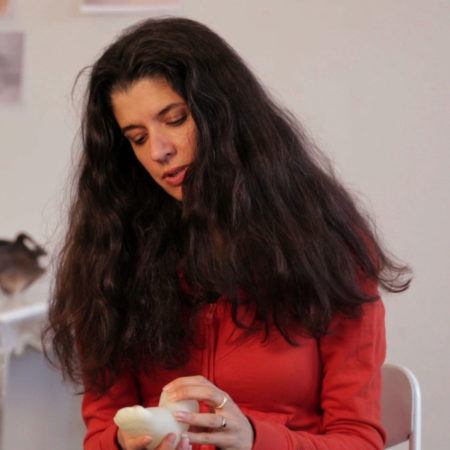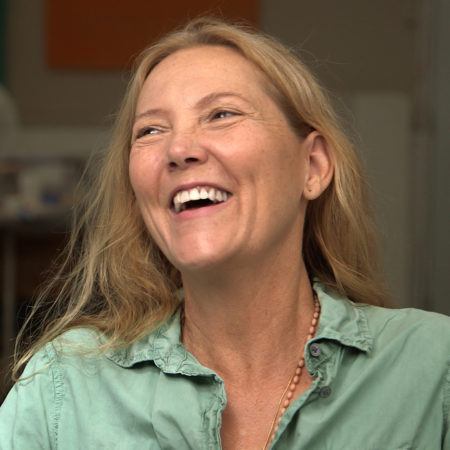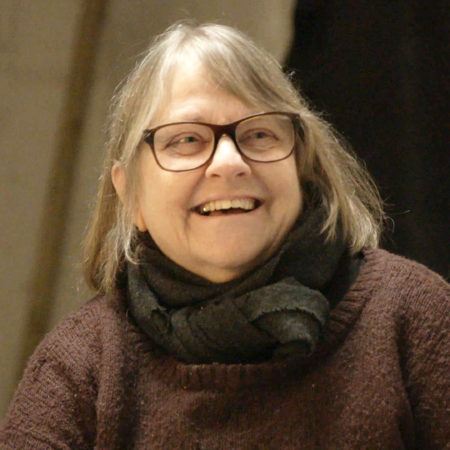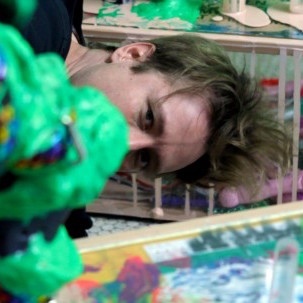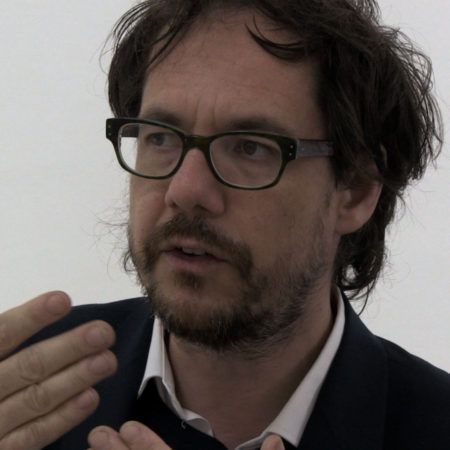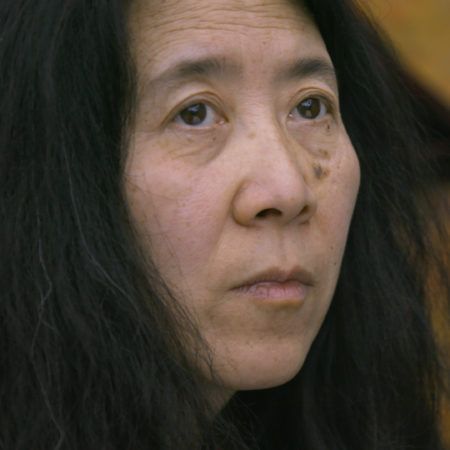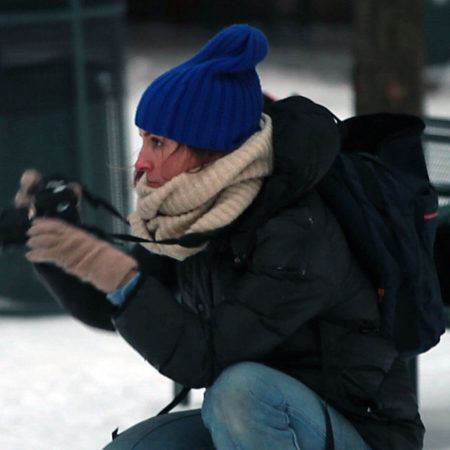Results 1–10 of 164
Janine Antoni
Janine Antoni’s work blurs the distinction between performance art and sculpture. Transforming everyday activities such as eating, bathing, and sleeping into ways of making art, Antoni’s primary tool for making sculpture has always been her own body. She has chiseled cubes of lard and chocolate with her teeth, washed away the faces of soap busts made in her own likeness, and used the brainwave signals recorded while she dreamed at night as a pattern for weaving a blanket the following morning.
Liz Larner
Liz Larner experiments with abstract sculptural forms in a dizzying array of materials, including polychromatic ceramics that evoke the tectonic geologic shifts of the western landscape. An inventor of new forms, Larner’s sculptures are not easy to categorize. They defy easy description by design, such as the geometric sculpture of a cube turning into a sphere that is both yet neither, or a complex chain of linked metal rings that never tangles and can also be worn as jewelry. Working with both analog and digital tools, Larner’s materials change from work to work and can include fiberglass, crystals, paper, clay, aluminum, steel, rubber, epoxy, mirror, cloth, and even bacteria. As daring as her investigation into new forms can be, Larner’s sculptures are approachable in their human scale and idiosyncratic vision that favors personal narrative over minimal austerity.
Stephanie Syjuco
Stephanie Syjuco was born in Manila, Philippines, in 1974. Syjuco works in photography, sculpture, and installation, moving from handmade and craft-inspired mediums to digital editing. Her work explores the tension between the authentic and the counterfeit, challenging deep-seated assumptions about history, race, and labor.
Phyllida Barlow
Phyllida Barlow was born in Newcastle upon Tyne, England, in 1944. Inspired by the urban environment, Barlow’s sculptures marry unconventional materials such as cardboard, plywood, plaster, and cement with vibrantly colored paint and fabrics. Her invented forms are created through layered processes of accumulation, removal, and juxtaposition—gestures that Barlow describes as “more functional than artistic.” The resulting massive works challenge viewers’ experiences of physical space, stretching the limits of mass, volume, and height as they tower, block, and interrupt space. Yet these works remain distinctly anti-monumental; the artist leaves exposed, unfinished seams, revealing the means of the works’ making and playing with the tensions between hardness and softness, the imperious and the comic, and the painterly and the sculptural.
Maren Hassinger
Maren Hassinger was born in 1947 in Los Angeles, California, and currently lives and works in New York City, New York. Hassinger received her BA in sculpture from Bennington College in 1969, and her MFA in fiber from the University of California, Los Angeles in 1973. The artist’s work in sculpture unites our industrial, built environments with the natural world, creating organic forms and references to plant life using wire rope. Movement is a central aspect of the artist’s work, her sculptures tilt, lean, and sway, as in Leaning (1980). Consisting of 32 bundles of wire rope arranged on the floor each leaning in a different direction, Leaning imitates movement forward in space, resembling feet or legs in motion. In Hassinger’s Industrial Nature (2022), the artist embeds her sculptures in the midst of the Project EATS Essex Crossing Rooftop Farm, creating a direct connection between her works and the natural world. The sculptural forms, erect strands of wire rope rising from cubes of concrete, sway with the wind alongside the crops grown at the farm. Through her work, Hassinger considers formal connections between the industrial and natural forms and creates a stage where viewers might consider their relationship more deeply.
Debo Eilers
Debo Eilers was born in 1974 in Texas, and lives and works in New York. Eilers’s multifaceted practice includes sculpture, video, collaborative installations, and interactive performances. Employing references to children’s games, toys, and characters, Eilers is interested in sculpture as an object that’s constantly redefined by its context and interaction with an audience, as opposed to fixed piece in a gallery.
Mark Manders
Mark Manders was born in 1968 in Volkel, the Netherlands. He now lives and works in Ronse, Belgium. Manders’ works in sculpture and installation are often described as surreal, haunting, and enigmatic.
Yin Xiuzhen
Yin Xiuzhen was born in 1963 in Beijing, China. Working in site-specific installation and sculpture, Yin uses second-hand or recycled items like clothing and domestic objects to create works that preserve personal memories in a rapidly globalizing and homogenizing world.
Olafur Eliasson
Olafur Eliasson was born in Copenhagen, Denmark, in 1967. Moving seamlessly from his early photographs to sculpture, immersive environments, large-scale public interventions, and architectural projects, Eliasson uses simple natural elements—light, color, water, and movement—to alter viewers’ sensory perceptions. Predicated on the idea that “art does not end where the real world begins,” Eliasson’s work lives in the active exchange between his creations and the viewers.
Erin Shirreff
Erin Shirreff was born in 1975 in Kelowna, British Columbia, Canada, and now lives and works in New York. Shirreff studied sculpture, but her practice is now focused on depicting and challenging the representation of three-dimensional art objects through photography and video. Often building maquettes of large-scale works in her studio, Shirreff then manipulates the light and conditions surrounding the objects before documenting them using digital and analog tools. Describing her videos as “psychologically driven,” Shirreff explains, “My videos don’t have any beginning or end. Every moment contains it, hopefully.”

